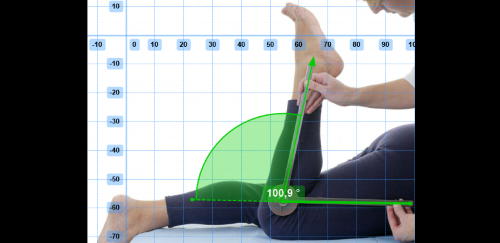Hey,
So I'm doing this sports science assignment and I got a bit confused. I'm measuring knee angles. The thing is that the deeper the person squats down, the smaller the angle is. As you can see in pic 1, the angle is 64.

In pic 2 (look at the post below) you can see that the less you squat down, the bigger the angle is. In this case it's 93.
My question is: WHY DO I NEED TO SUBTRACT THE ANGLE FROM 180?
In pic 1 the answer would be 180-64= 116. The knee angle is equal 116.
In pic 2 180-93= 87
But why do I need to subtract? Can someone properly explain?
Sorry if this sounds like a stupid question but I'm confused


